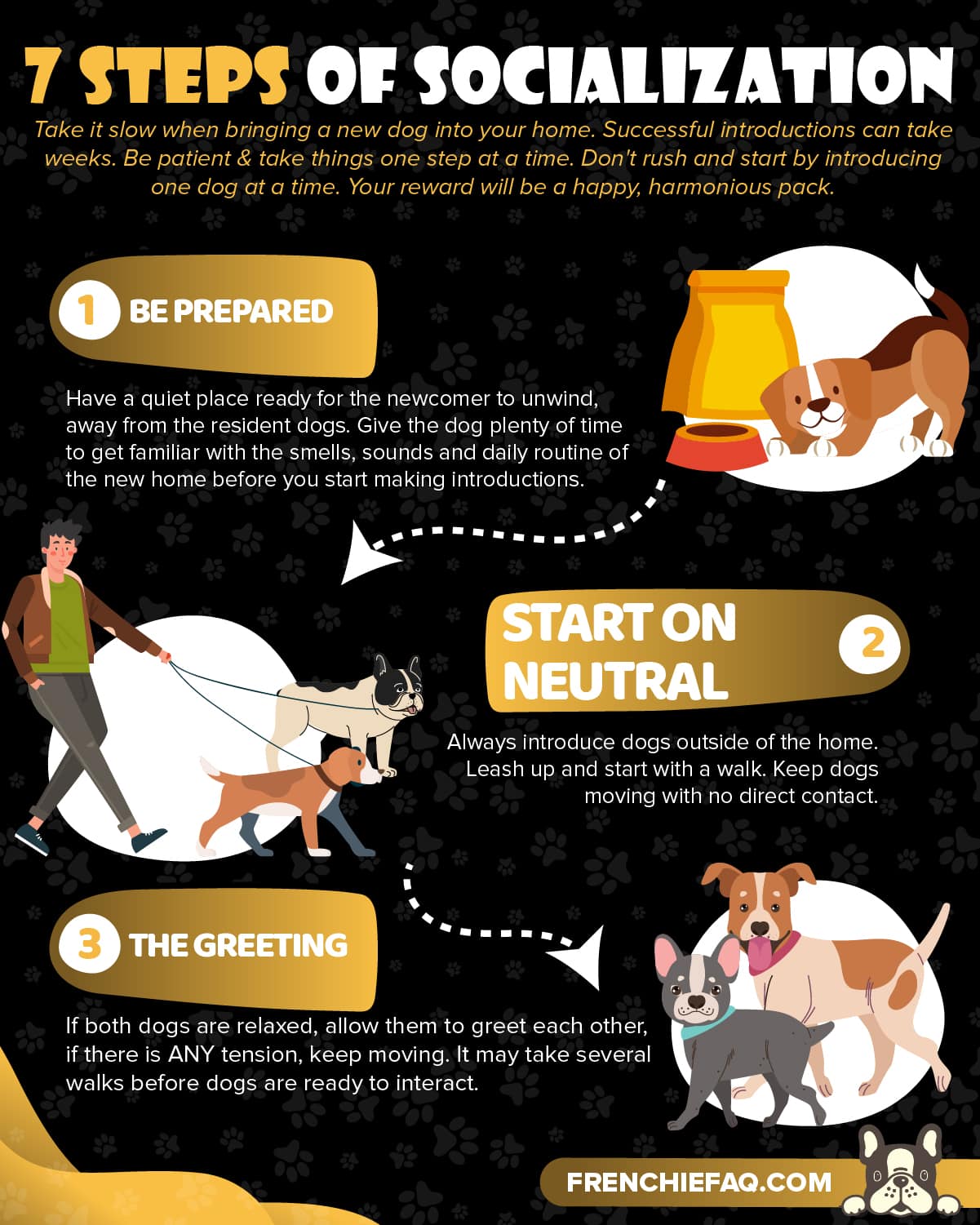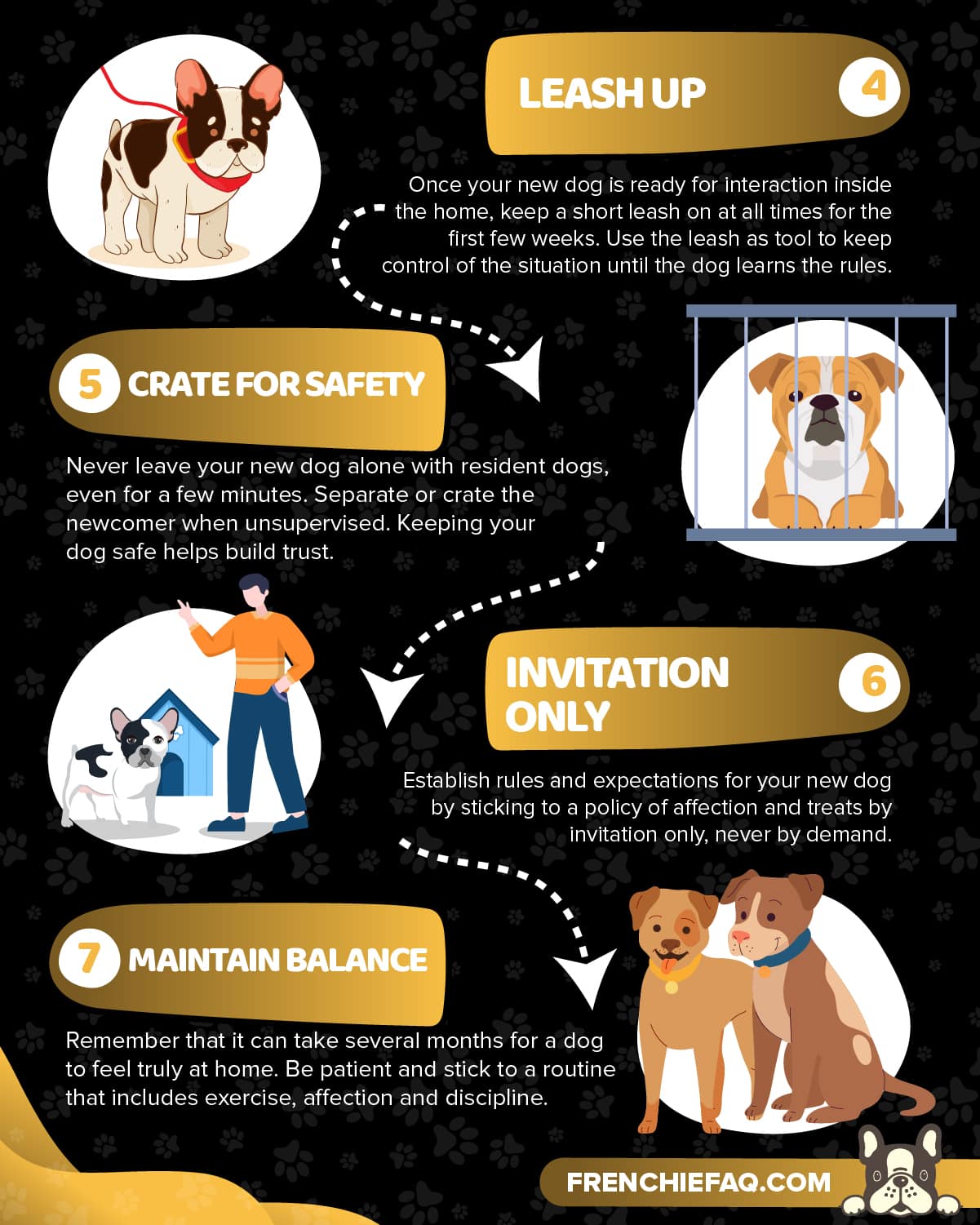
Have you just adopted or purchased a new puppy, and you’re wondering how to introduce your current dog to the new one? Of course, we know how important it is to ensure your furry friends get along. However, as exciting as it sounds, introducing your family dog to a new one is surely a nerve-wracking experience.
Although dogs are social animals, they can still be territorial and don’t appreciate strange intruders in their space. To make the process as smooth and successful as possible, you must carefully plan each introduction step. We’ve put together 7 essential tips to help you introduce your current dog to your new pup without a hitch!
7 Steps of Dog Socialization
To start the socialization process, you must take things slow, as successful introductions can take weeks. Below are the 7 steps that you can take to introduce your current dog to the new pup properly:
1). Be Prepared
First of all, having a quiet and peaceful place ready for your new pup’s arrival is essential. It will help to reduce the risk of potential confrontations and make the introduction process simpler. For instance, choose a location both dogs are familiar with or a new one where they won’t have any negative memories or experiences. In addition, your new pup needs to get familiar with the surrounding sounds, smells, and sights; for that, they need time. Therefore, you might want to consider having your new puppy in a separate space for the first few days.
2). Start on Neutral Ground
When you’re ready to bring your new puppy home, start the introduction process in a neutral space that neither of the dogs has been to. For example, you can first introduce them outside of the home as it will help them avoid potential territorialism and lessens the chances of a confrontation. Just leash them up, start with a walk, and keep dogs moving without direct contact to avoid any potential aggression.
3). Let Them Greet Each Other
Once the dogs appear relaxed, you can let them greet each other. Make sure there is no face-to-face or direct contact, as it could trigger aggressive behavior. You can allow them to sniff each other from a distance and if they seem comfortable, then you can move on to the next step. Keep in mind that it may take several walks before the dogs are ready for direct contact. Moreover, you should never try to force the interaction as it could end up in a negative experience.
4). Leash up the Dogs For Inside Interaction
So now your pups are interacting, it’s time to introduce them inside your home, where they are more likely to stay. However, before you do that, you should always leash them up for safety measures. You should keep them on a small leash for the first few interactions, this may for a few weeks. This will help reduce the risk of potential aggression and make it easier for you to separate them if needed. Try this until your dogs are comfortable with each other and they have learned the rules.
5) Use Crate For Safety
When introducing the dogs in your home, consider placing them in separate crates first, as it will help keep them separated and reduce their stress levels. This is especially important if there’s a size difference between the two. Most importantly, use the crate to ensure that your pup is getting enough rest, and if it’s feeling overwhelmed or scared, then you can separate them for a while. Moreover, you can use a crate when you are leaving home, as leaving your new pup with a current one alone can lead to an unpleasant situation.
6) Invitation Only Interactions
You should establish rules and boundaries to training your pups to be comfortable with each other. For example, you should only allow interactions once invited and not allow them to cross each other’s space. This will help them learn to respect each other’s space and boundaries and prevent them from getting in each other’s faces. In addition, your new dog needs to stick to the affection policy you have established and should always wait for the invitation to the treats instead of trying to snatch them away or demanding them.
7). Maintain Balance
Finally, you need to maintain a balance in their interactions. Don’t let one dog take charge of the other or show dominance. Instead, make sure to give equal attention and rewards to both of them, and remember, consistency is the key. By doing this, you will prevent any type of jealousy, and your pups will learn to welcome each other’s presence. Moreover, remember that it may take several months and patience for a dog to feel truly at home. Therefore, be patient and stick to a proper routine, including discipline, exercises, and playtime.
Interested in owning a French Bulldog? Learn about french bulldog shedding and do french bulldogs shed a lot.
Final Words!
In conclusion, introducing a new dog to an existing one can be stressful, but it doesn’t have to be. Remember that patience is key, and you should never rush the process. Spend quality time with your furry friends and give them lots of love and care so they feel secure in their environment. Respect their space and needs, and ensure any discipline or training is monitored closely and done using positive reinforcement practices.
Moreover, don’t forget to check in with the experts when necessary – vets, trainers, and groomers are fantastic sources of knowledge and can help guide you through anything that feels overwhelming or outside your expertise. Introducing a new pet into the family is a joyous experience for everyone involved – make sure yours goes as smoothly as possible!
Moreover, if you want to learn more about dogs, their behaviors, health issues, food, DNA, and colors, follow Frenchie FAQ now.

